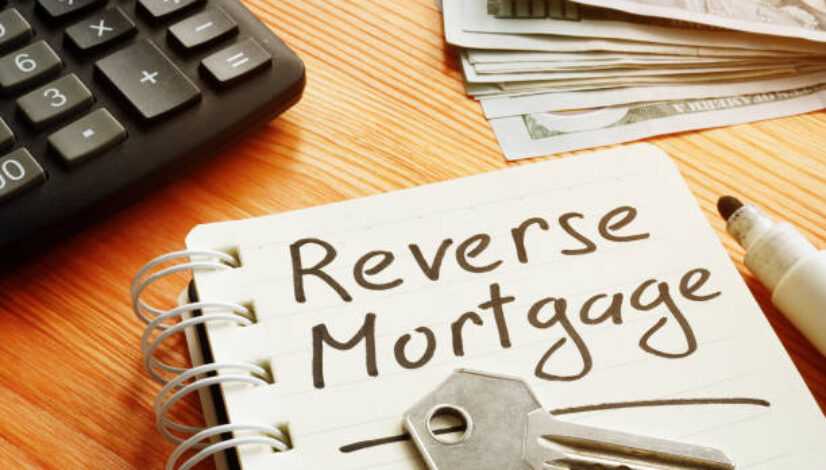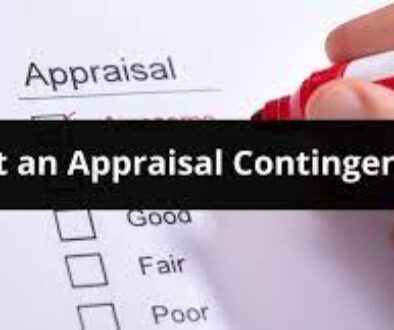Reverse Mortgage
Reverse mortgage
If you’re at least 62 and worried about affording your retirement years, a reverse mortgage could be an option.However, this loan is a bit complicated and can come with some drawbacks.
It’s important to know how this loan works, how it can help you and whether it’s the right option for your financial situation and retirement goals. Let’s explore the details of a reverse mortgage so you can make the right decision.
What Is A Reverse Mortgage?
A reverse mortgage is a loan that allows homeowners who are 62 or older to borrow against a portion of the equity in their home. A reverse mortgage works differently than a traditional mortgage loan, though. Instead of making payments to your lender, your lender will make a payment to you. The loan first pays off your existing mortgage, if you have one, and then you can use the remaining funds for anything you’d like. You must continue to pay your property taxes and homeowners insurance, and you’re responsible for maintaining the home.
These loans are designed for older homeowners who may have retired and want to eliminate their monthly mortgage payments or supplement their income.
Reverse Mortgage Eligibility: Who Can Get One?
Not everyone can take out this type of loan. Here are the requirements to qualify for reverse mortgage
You must be at least 62 years of age.You can only get a reverse mortgage on your primary residence, not a second residence or vacation home.To take out a home equity conversion mortgage (HECM), the U.S. The Department of Housing and Urban Development (HUD) requires that you attend a reverse mortgage counselling session. You’ll also be required to undergo a financial assessment to ensure you can meet the financial obligations of the loan. You can’t owe federal debt, such as student loans or income tax.
How Does A Reverse Mortgage Work?
A reverse mortgage might sound like free money, but it isn’t. With such a mortgage, you borrow against your home’s equity which is the difference between what you owe on your mortgage and what your home is currently worth.
To determine how much money you can receive from a reverse mortgage, your lender will order an appraisal of your home. Let’s say your home is worth $350,000 and you owe $100,000 on your mortgage. In this scenario, you have $250,000 worth of equity. Most lenders won’t allow you to borrow the full $250,000 in a reverse mortgage, but you’ll borrow a percentage. This leaves you with some equity still in the home.
Let’s review some other helpful facts about living with a reverse mortgage.
Your Existing Mortgage Is Paid Off First
The money from the loan first pays off your existing mortgage, after which no monthly mortgage payments are required. Depending on what you choose, you may receive payment from your lender in a lump sum, monthly payments or a line of credit – or any combination of the three. You can use this money for whatever you wish. This money isn’t taxable.
However, a reverse mortgage can impact certain need-based assistance programs, so it’s recommended to speak with a financial advisor before taking out this type of loan.
While you’re receiving payments, your lender will add interest to your existing loan balance. This means the amount of money you’ll eventually owe will increase during the lifespan of your reverse mortgage.
You’ll Still Pay Certain Bills
A reverse mortgage also doesn’t eliminate certain payments. You’ll still have to pay your yearly property taxes and homeowners insurance bills You’ll also be responsible for any origination fees and closing costs on your reverse mortgage. You must also continue to maintain the home and pay for any homeowners association dues.
You don’t have to pay the loan back until you sell your home, move out or pass away. If you sell your home, you’ll have to pay back what you owe then, using the funds from the sale to do so. Any remaining proceeds are yours to keep.
Your Heirs Will Have Some Options
If you pass away, the loan will also come due. Your heirs will have some options. They may buy the home for what’s owed on the loan or for 95% of the appraised value – whichever is lower. They could sell the home and keep any remaining proceeds after paying the loan balance. Or they can simply turn it over to the lender to satisfy the debt.
Reverse Mortgage Fees: Other Ongoing And Upfront Costs
A homeowner will need to pay a number of fees to a reverse mortgage lender, in addition to the fees mentioned earlier. You can pay them in cash or by using money from your loan. Here are a few of the fees to expect:
- Housing counsellor: As noted already, taking out an HECM loan requires meeting with an expert from a HUD-approved counselling agency. Costs vary.
- Mortgage insurance premium: This is in addition to your homeowners insurance and ensures you’ll receive the loan advances you expect.
- Servicing fees: These fees allow your lender to cover the costs of administering your account.
Different Types Of Reverse Mortgages
Three main types of reverse mortgages exist. But how do they differ?
Home Equity Conversion Mortgage (HECM)
The most common reverse mortgage is the home equity conversion mortgage (HECM). This type of reverse mortgage is insured by the Federal Housing Administration (FHA). The most you can borrow with one of these loans in 2023 is $1,089,300. If you must borrow more than that, you’ll need to apply for a jumbo reverse mortgage. Eligible property types include single-family homes, HUD-approved condominiums, manufactured homes that meet FHA standards, and certain other homes.
Single-Purpose Reverse Mortgage
A single purpose reverse mortgage is typically less expensive than an HECM, but it comes with limits. As the name suggests, you can only use the funds from this type of reverse mortgage for one purpose. Your lender might approve you for the loan but stipulate that you can only use the funds to cover home repairs, insurance premiums or your property tax bills. Typically, these loans are offered by charities, nonprofits and local governments to homeowners who are struggling to pay their bills and have a lower-to-moderate income. They’re not available everywhere.
Jumbo Reverse Mortgage
You’ll need to take out a jumbo reverse mortgage, also known as a proprietary reverse mortgage for any amount more than $1,089,300 in 2023. Because a larger loan is considered riskier, your lender might charge you higher fees and a higher interest rate for a jumbo reverse mortgage. Unlike an HECM, this type of reverse mortgage isn’t insured by the FHA. That means it doesn’t come with as many protections. It also doesn’t require an HUD-approved counselling session or financial assessment.
Advantages Of A Reverse Mortgage
Let’s discuss the advantages of a reverse mortgage:
If you’re struggling to pay your mortgage or other bills, a reverse mortgage will eliminate your monthly mortgage payment and provide you with an extra income stream. This might provide enough financial relief to afford staying in your home. Just remember, you’ll still have financial obligations with this loan. These include paying your homeowners insurance and property taxes.
Reverse Mortgages Are Immune To Devaluation
If you take out an HECM, you don’t have to worry about declining home values. That’s because you’ll never owe more than the home is worth.
If you pass away, your non-paying spouse might be able to stay in your home instead of selling. This can bring you peace of mind later in life.
Disadvantages Of A Reverse Mortgage
Now, let’s look at a few disadvantages of a reverse mortgage:
Your Equity Decreases
Remember, you’re borrowing from the equity in your home. This means you’ll make less profit if you decide to sell or your heirs will inherit less.
Your Loan Balance May Increase
Unlike with other loans, the balance on your reverse mortgage will grow over time unless you make payments to cover the interest charged by your lender. This growing balance might not matter to you unless, again, you want to leave your home to your heirs.
You May Outlive Your Loan’s Benefits
Depending on how you receive your reverse mortgage proceeds, you could spend your money before you pass away. Consider taking out tenure monthly payments, which will provide equal monthly payments for as long as you remain in the home and treat it as your primary residence. If you choose a different form of payment, you’ll need to make a plan for your money and spend it responsibly.
Your Estate Becomes Smaller
Leaving your home to your heirs might become more complicated with a reverse mortgage. Your heirs may need to sell your home to pay off your reverse mortgage unless they can afford to cover these costs on their own.
Your Children Will Have To Pay It Off To Keep The Home
If your children or other family members want to keep your home, they would have to buy the home to pay off the reverse mortgage. If they can’t do this, they’ll have to sell the home or sign the deed over to the lender.If your reverse mortgage is an HECM, which is insured by the federal government, it’s a nonrecourse loan. That means you’ll never owe more than the value of your home. If you sell your home for an amount lower than the amount you owe on your reverse mortgage, you won’t have to pay back the difference.
Scammers Are A Consideration
Older homeowners are a frequent target of reverse mortgage scammers. Foreclosure scams, equity-theft scams, house-flipping scams and other forms of fraud can destroy a homeowner’s hard-earned nest egg.
Insist that reverse mortgage lenders explain the terms plainly and that they’re not too good to be true. Watch out for high-pressure sales tactics, especially if they’re unsolicited.
How Do You Pay Back A Reverse Mortgage?
How you pay back a reverse mortgage varies with the situation. Here are a few scenarios that involve different ways to pay a reverse mortgage back:
If You Have An HECM And Sell Your Home
If owners decide to sell their home after taking out a reverse mortgage, they must use the proceeds from this sale to pay off their loan. If the home sells for less than what the owners owe on the loan, they won’t be responsible for making up the difference as long as they have an HECM.
If You Have An HECM And Pass Away
Your reverse mortgage must be paid off if you pass away. In this case, your heirs can sell your home and use the proceeds to pay off the reverse mortgage. They can also give the home to your lender. If they want to keep your home, they’d have to purchase the home.
If You Move Out Of The Home
You must live in the home as your primary residence for more than half the year. If you move out of the home, the reverse mortgage will come due. You’ll need to pay back the loan even if you wish to keep the home. That could be done with your own funds or by refinancing the loan.
Reverse Mortgage Vs. Refinance: Which Is Better?
While a reverse mortgage can supplement your income as you age, this type of financial tool might not be your best choice. There are times when you might consider alternatives to a reverse mortgage,especially if you want to leave your home to your children after you die or you’re planning on selling the property.
You might instead consider refinancing options for seniors and the different types of mortgage refinancing that could be a better alternative to a reverse mortgage.
Cash-Out Refinances
A cash-out refinance is one option. Most people refinance to lower their interest rate or shorten or lengthen the term of their existing mortgage loan. A cash-out refinance, though, can also provide you with a lump sum of cash that you can spend on anything.
Remember: If you pass away before repaying your new mortgage, your heirs would have to pay off that loan before taking over possession of your home.
Reverse Mortgage FAQs
A reverse mortgage is a complex lending tool, so it’s normal to have some questions. Here are some of the most common ones.
Can I owe more than my home is worth with a reverse mortgage?
If you take out an HECM, the most popular type of reverse mortgage, you won’t have to pay back more than what your home is worth when you pay off the loan. If you owe more on your mortgage than what your home is worth – meaning you’re underwater on your mortgage– but sell your home for its appraised value, mortgage insurance covers the difference.
Can I reverse my reverse mortgage?
You can get out of a reverse mortgage but doing so can take time and money. You can always sell your home, using the proceeds to pay off your reverse mortgage. But if you want to stay in the home, you might need to refinance your reverse mortgage into a traditional mortgage loan. This will take money, with refinances typically costing 2% – 6% of the loan amount in closing costs.
How do I sell my home with a reverse mortgage?
Once you sell your home, you’ll use the proceeds from the sale to pay off your reverse mortgage. If you sell your home for its appraised value but owe more on your mortgage than this sales price, you won’t have to make up the difference if you have an HECM. Instead, your mortgage insurance will cover the gap between what you owe and the price you were able to nab when selling your home. If you sell your home for more than what’s owed, you can keep the remaining proceeds.
How much money can I get from a reverse mortgage?
The amount you can borrow with a reverse mortgage depends on the youngest borrower’s age, as well as current interest rates and the amount of equity you have in the home.
Can I refinance a reverse mortgage?
You can always refinance a reverse mortgage to get a lower interest rate or move to a different type of mortgage loan. You’ll have to pay closing costs, though, and you’ll need enough equity in your home to qualify for a refinance.




